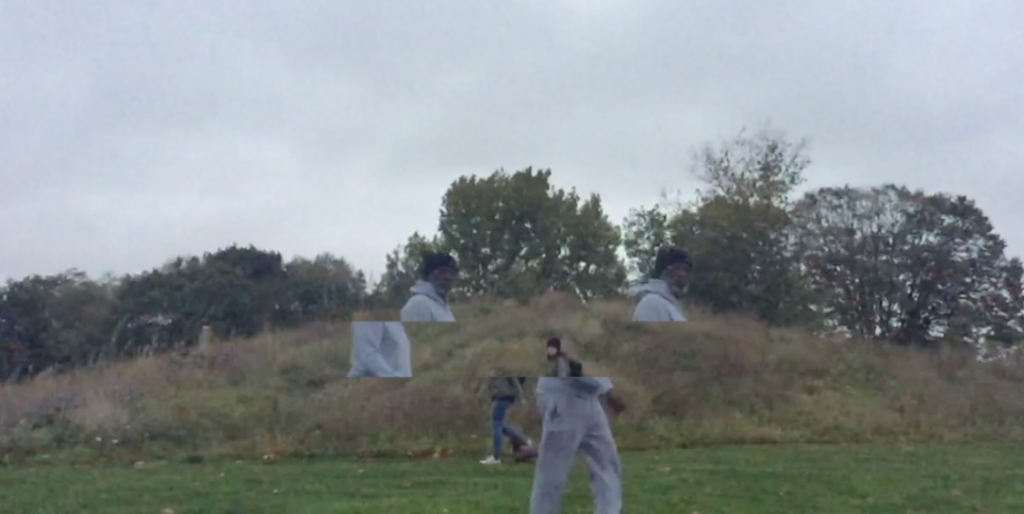Over the past year or so, I have begun to look at the notion of the simultaneous; of time and coincidence, and how we as humans perceive it. Through my work I’m trying to figure out why I feel moved emotionally by things that have nothing to do with me and that weren’t made for me. Although I of course understand it, I find it difficult to fully comprehend that anything outside my direct phaneron is existing simultaneously to me. Places I’ve visited once before but have never returned to, people I’ve made darting eye contact on the street and people I didn’t notice at all, they all played the fleeting roles of secondary characters and scenes in my own motion picture yet continue to act out their own, which is of course just as complex and fragile as mine could ever be.
This was what my work was initially looking at: trying to monumentalise fleeting contacts with other people living in London through recording and painting them, taking the time to reconstruct their image in an effort to prolong their existence within my own experience. I have since however moved on to look at people and places to which I have no connection at all. I feel like studying people who I have actually had contact with is maybe self-indulgent, trying to take an idea that everyone must have had at some point whilst on the tube further than it needs to go. I want to start looking at experiences that could never overlap with my own due to geography and other factors, yet are linked by the fact that they’re happening at the same time, somewhere on the same planet. I’m not sure yet how to turn this question into something tangible, but am so far looking at painting, video and photography.
Artists and works who have dealt with similar topics include Layla Curtis, whose year-long project entitled ‘Antipodes’ (1) consisted of pairings of webcams showing footage from two directly opposite points on the earth. There’s something really beautiful about the work, about how unknowing (yet often aesthetically similar) each landscape is of its pairing.
A similar use of the simultaneous can be found in the last few minutes of John Smith’s famous 1976 film ‘The Girl Chewing Gum’ (2), where he simply replaces the noisy audio from the street scene in the beginning of the film with that of the field he reveals to us that he’s standing in. This simple, almost too obvious juxtaposition of sound and image creates an unexpectedly unsettling viewing experience.
(1) Layla Curtis, Antipodes, 2013-2014
http://www.antipodes.uk.com
(2) The Girl Chewing Gum, Dir. Smith, J., 1976
http://www.tate.org.uk/art/artworks/smith-the-girl-chewing-gum-t13237


